FEATURE STORY
What’s In Your Shopping Cart?
Notables from the world of food and nutrition share the grocery items and shopping hacks they can’t live without
By Stephen Perrine
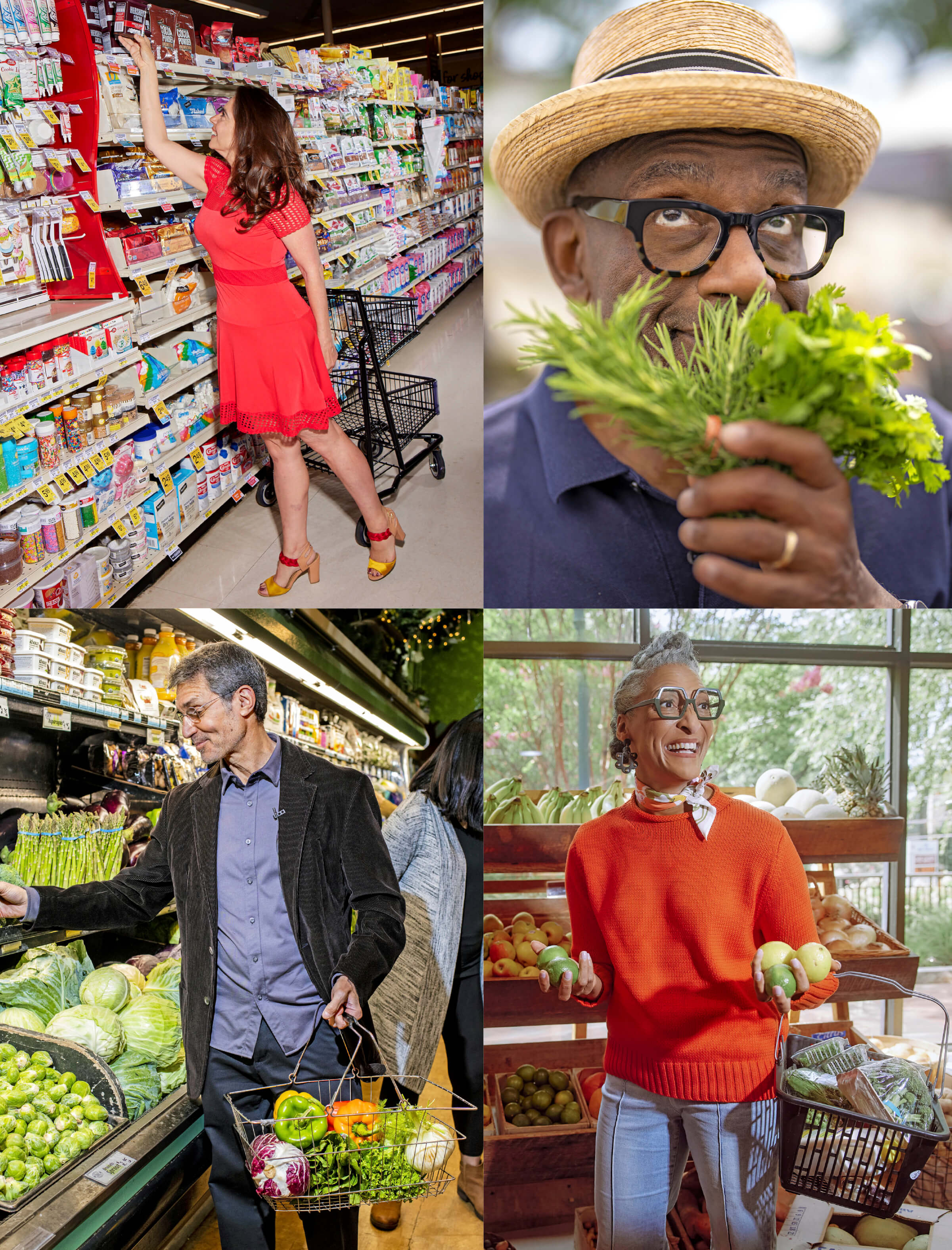
Clockwise from top left: Devin Alexander, Al Roker, Carla Hall, David Katz, M.D.
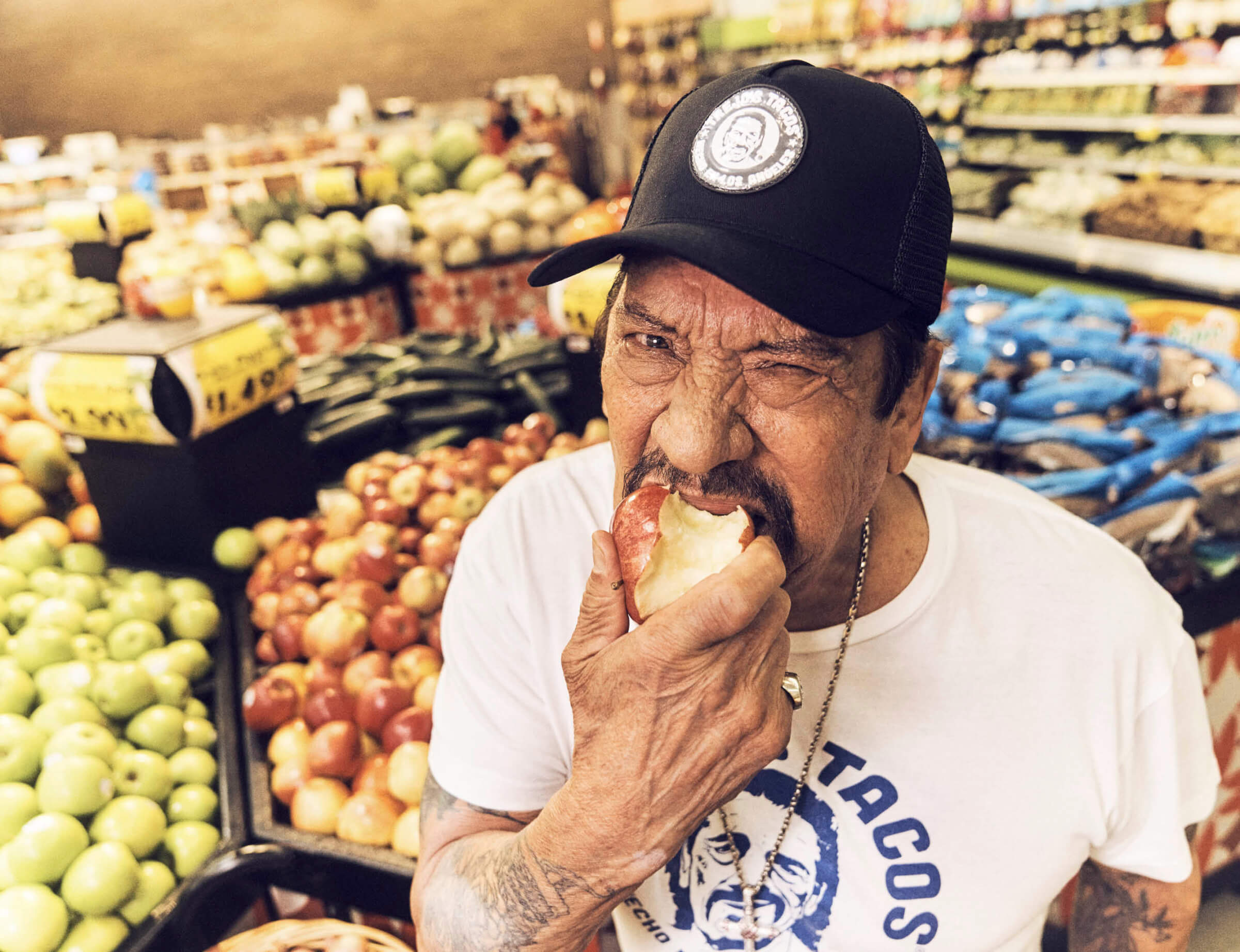
DANNY TREJO, 79
Actor and restaurateur
WHAT’S IN HIS CART: Eggs, chicken, corn tortillas, cheese, mangoes, ice cream and some not-too-spicy hot sauce
DANNY TREJO’S growing restaurant empire—he now operates a chain of five Trejo’s Tacos—demonstrates that healthy food can be fast, easy and, most important, affordable, he says. Growing up, affording healthy food was a real issue. “The first-of-the-month meals could be pretty elaborate, but then along the 15th, that’s when we’d say, ‘Hey, Mom, what’s this?’ and she’d say, ‘It’s called never mind, eat it.’ ”
That free-form approach to cooking has stuck with him. Breakfast is often scrambled eggs with tortillas (always traditional corn tortillas—“they’re a lot healthier”). In fact, “You can put just about anything in a tortilla,” he says. “Whatever sounds good, just put it in a corn tortilla and you’re set.” At the local market near his home in Los Angeles, he’ll always stuff his cart with fruit; come Sunday, Trejo likes putting out a big tray with blue cheese dressing, fruits and vegetables, and it’s “Let’s go, Rams!”
One thing you won’t find in his shopping cart: super-hot sauce. It’s an aversion left over from his childhood. “The men in my family would say, ‘Hey, Danny, don’t eat this, it’s for men.’ He just called you a girl! Now you gotta eat it. And it felt like your teeth would fall out.” He prefers seasoning his food with pico de gallo—“something that adds flavor rather than just heat.”
How does Trejo stay in such intimidating physical shape heading into his ninth decade? Weight training and plenty of walking.
“The biggest problem, especially in the Latino community, is that a lot of our food is starchy, a lot of our food is fatty,” he says. “So if you don’t exercise, it’s going to sit there and you’re going to get fat. I’ve been the same weight—175—for years.”
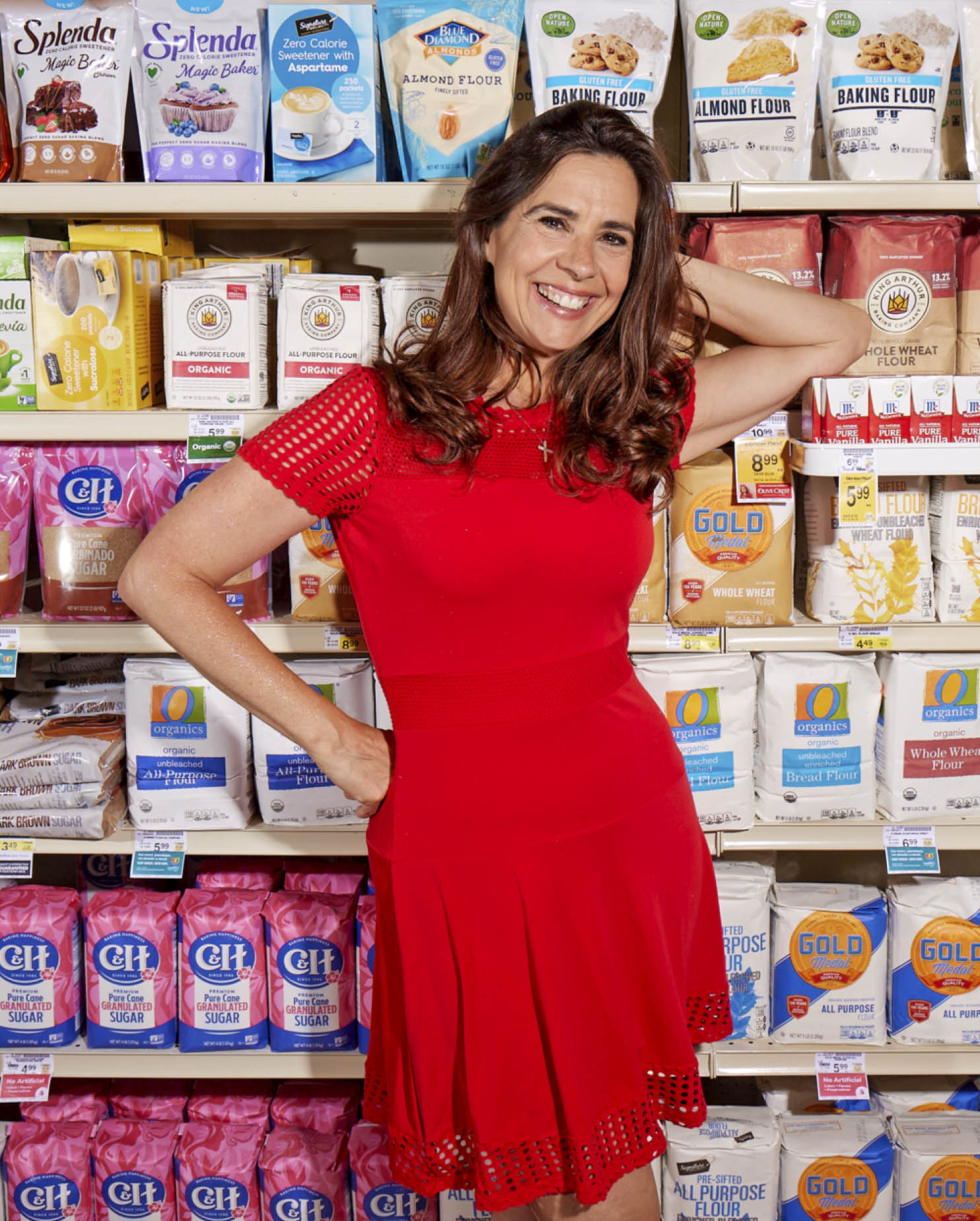
DEVIN ALEXANDER, 52
Chef, author and TV host
WHAT’S IN HER CART: Cocoa powder, phyllo dough, agave nectar, Greek yogurt, almond flour, salmon, shrimp and mild salsa verde
DEVIN ALEXANDER knows what it’s like to be ashamed of her weight. By age 15, she had reached 200 pounds, and she struggled to find a healthy path forward. “It was the ’80s. Richard Simmons was not a relatable role model for a teenage girl,” she says.
Alexander decided to cook her way out of her weight trap. She educated herself about nutrition and culinary science, eventually becoming one of the stars of The Biggest Loser, where she taught contestants how to make decadent foods healthy. She uses the sugar substitute stevia, cocoa powder, zero-percent-fat Greek yogurt, and a tiny bit of salt to make a breakfast for her young daughter that tastes like chocolate pudding.
Alexander credits a lot of her creativity to keeping a handle on her food budget. Her top tip: “Use the digital apps from your supermarket. They’ll give you a considerable amount of money off” select items, she says. “It’s my own little Chopped challenge: Buy what’s on sale and see what you can do with it.”
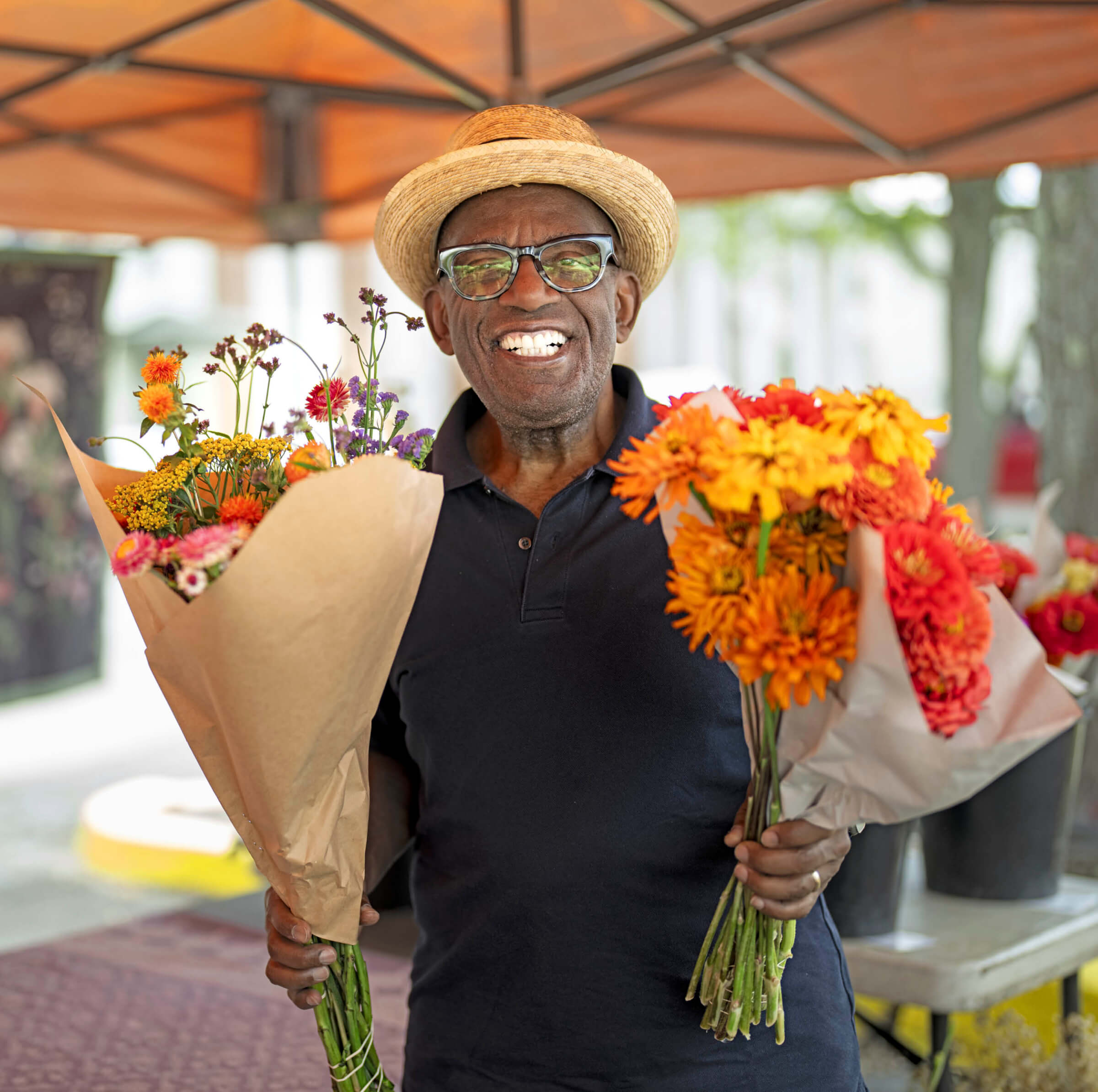
AL ROKER, 69
Cohost, Today
WHAT’S IN HIS CART: Vegetables, plenty of fresh herbs and fresh-caught fish
FOR MORE THAN 25 years, Al Roker has been forecasting the weather—and investigating the latest trends in nutrition and weight loss—for millions of Today viewers. But he’s also known for his personal courage in documenting his own weight-loss journey and health challenges, from his gastric bypass in 2002 to battles with prostate cancer, blood clots and, earlier this year, a knee replacement. We caught up with him at the farmers market in Hudson, New York, where he’s been a regular shopper for more than 20 years.
“The great thing about a farmers market is that it takes care of the whole you,” Roker explains. “You get clean, organic food that’s been brought to you by the people who grow it and produce it. And there’s the social aspect of it—talking with the vendors, talking with the farmers. It’s not like, ‘rush to the store, get to the express line, get out.’ You make a morning of it.”
For Roker, clean, organic food is increasingly important. The best way to keep your health on track, he believes, is to “surround yourself with the best food possible. The best food is the freshest food, and your local farmers market is what provides that.”
Roker says he and his wife, journalist Deborah Roberts, eat at home four or five nights a week, and dinner is usually something simple, either roasted in the oven or pan-sautéed. “I eat a lot of fish, a lot of chicken, and just olive oil, salt, pepper and herbs. Just good-quality proteins, lots of great veggies and herbs to elevate the flavor.” What about sauces? “Sauce takes too much time,” he laughs. “I’m all about easy.” Roker and Roberts usually take a quick walk after dinner, a healthy habit they try to stick to.
After decades of interviewing diet experts, what’s the tip he abides by the most?
“Moderation,” Roker says. “You can eat a lot of things—just don’t eat a lot of those things.” He’ll indulge in decadent foods, for example, but “just a little taste. I don’t need to eat the whole thing. So just … less.”
Join Al Roker as he shops at his local farmers market at aarp.org/alroker.
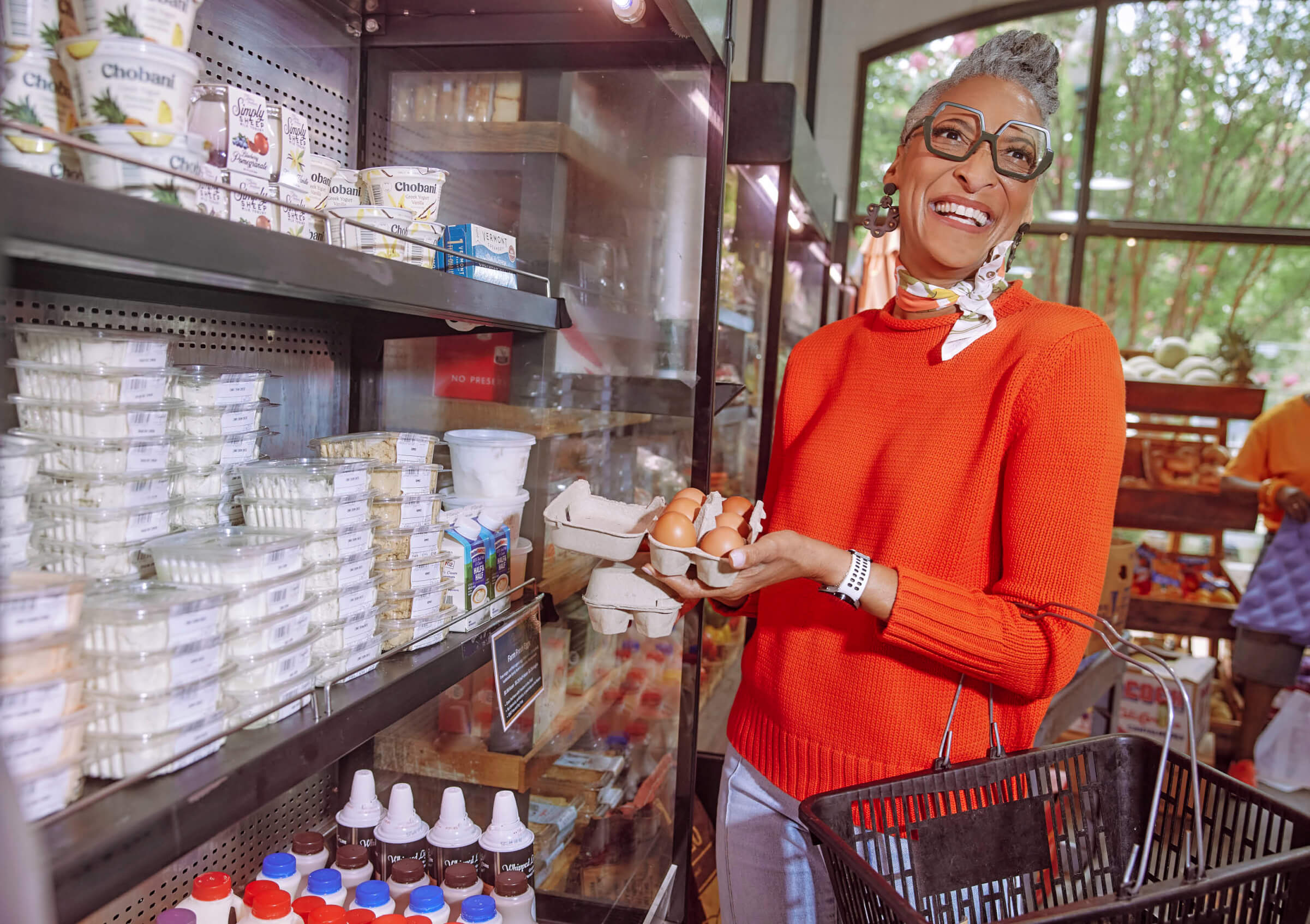
CARLA HALL, 59
Chef and TV host
WHAT’S IN HER CART: Precut veggies, tomatoes on the vine, full-fat dairy and lots of eggs
DURING THE COVID pandemic, Carla Hall thought she might want to become a bodybuilder. She started working out like a fiend while following a strict regimen that included eating lots of broccoli, chicken and rice. “Then I realized that the women had to wear those crazy suits and high heels, and I was, like, ‘Oh, no!’ ” laughs the former star of The Chew.
Today, easy and sensible is Hall’s shopping strategy. A frequent choice is a bag of pre-shredded vegetables like Brussels sprouts and cabbage. “I never bother to cut them myself,” she confides. And knowing how to cook them is crucial. “A lot of people overcook their vegetables,” she says. Instead, try cooking them briefly using high heat in an oven, skillet or grill. “I have even gotten people to like asparagus: Cook them in a little cast-iron skillet, sear them until they’re slightly bendy, and add a little salt, lemon zest and herbs.”
Salads are another way she keeps things simple: “A lot of people don’t think about texture” when it comes to salads, she advises. “You need something smooth and something crunchy and something chewy.” Her secret salad tip: She buys cherry tomatoes on the vine, then soaks the vines in olive oil, giving the oil a grassy tomato flavor. She makes her own dressing with yellow mustard, hot sauce, a bit of honey, oil and whatever vinegar is on hand. “Put it all in a jar and shake it. It’s easy.”
One area where Hall doesn’t scrimp: “Eggs. My grandfather was a doctor, and there was a lot of bartering for his services, and we would often get eggs that were just harvested. It’s such a different taste—there’s nothing like it.” And while she still often returns to her chicken, broccoli and rice, one thing that has changed in recent years, Hall says, is how she cooks: During the pandemic, she dusted off the air fryer in her attic and learned how to use it. “It’s become my best friend.”
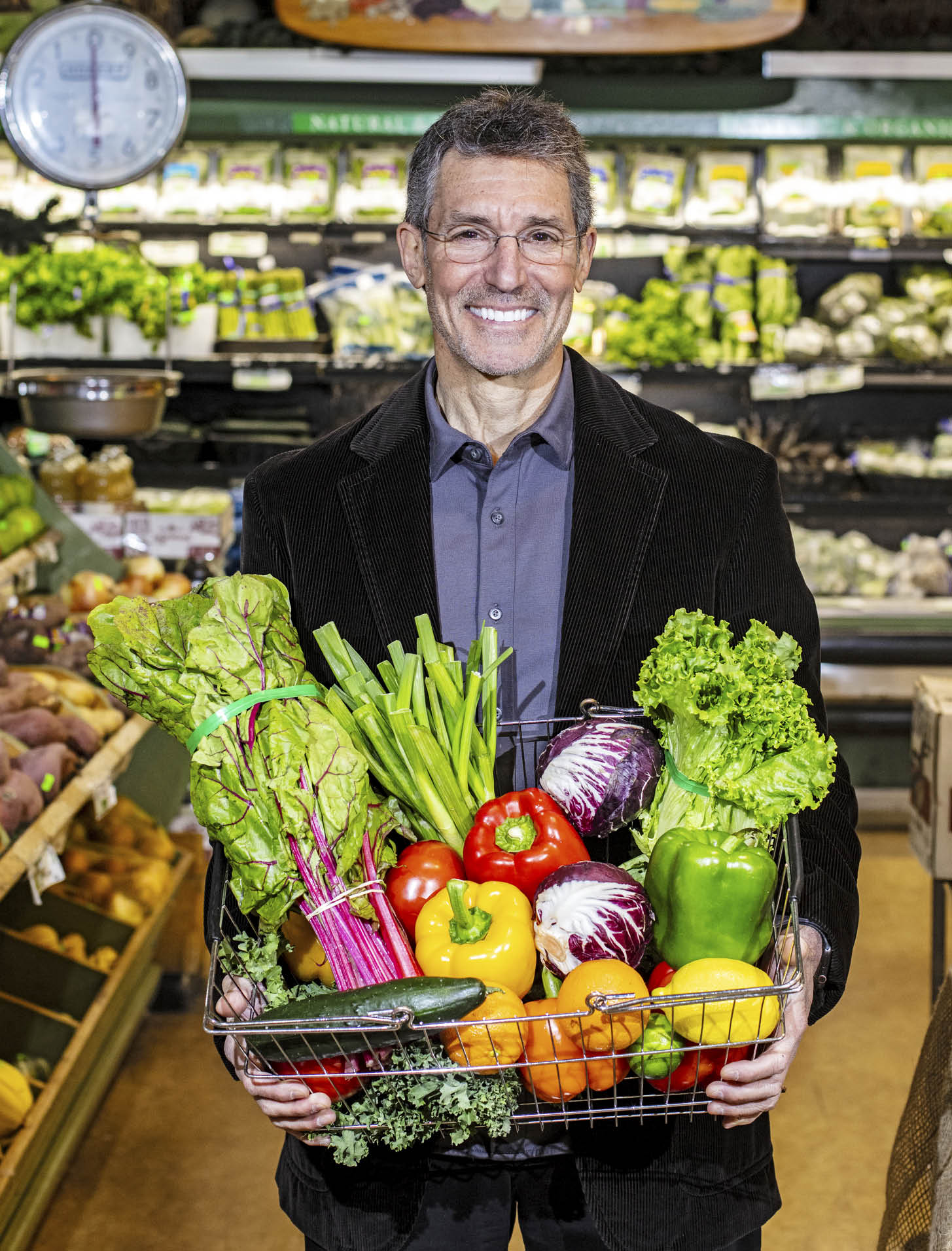
DAVID KATZ, M.D., 60
Author, lifestyle medicine specialist, and founder and CEO of Diet ID, Inc.
WHAT’S IN HIS CART: Vegetables and fruits in every color; oats and other whole grains; nuts, seeds and legumes
AS A CHILD, David Katz loved riding horses. One day, he says, “I looked into the eyes of a horse and I looked into the eyes of a cow, and I thought, I don’t see much of a difference here.”
Katz gave up eating mammals on the spot and has since gravitated to a nearly vegan diet. “I don’t think you can say it’s unethical to eat animals,” he says. “But incarcerating them from birth and subjecting them to ongoing abuse is a different story.”
Like most people who eschew meat, Katz pays close attention to getting enough protein—an important issue for older people. “If you source that extra protein from seeds, nuts, and grains like quinoa, and especially lentils, beans and chickpeas, you’re getting a fairly dense distribution of protein,” he explains. “At the end of the day, if you eat a variety of fruits, vegetables, lentils, seeds, nuts and whole grains, and if you mostly drink water when you’re thirsty, you can’t go too far wrong.”
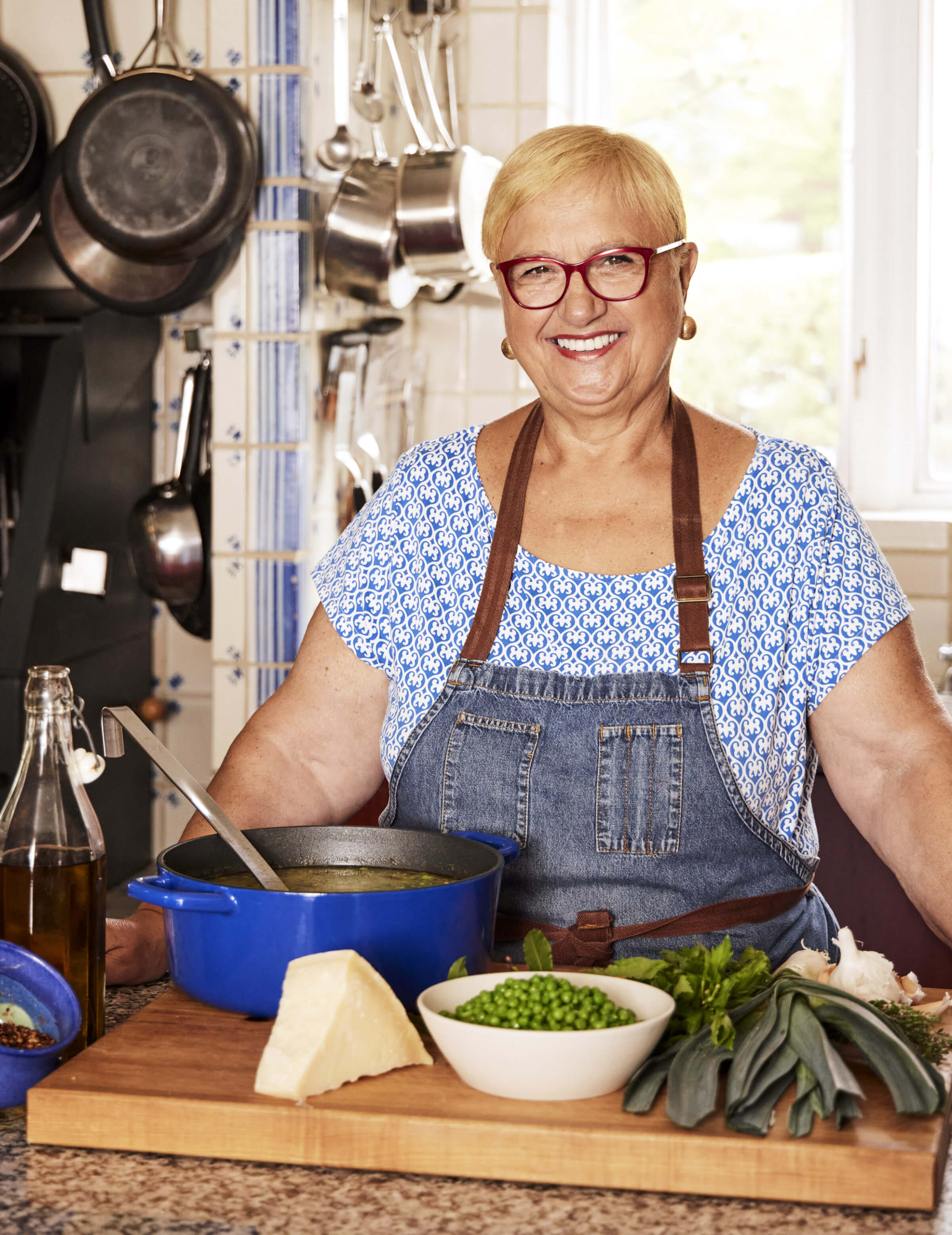
LIDIA BASTIANICH, 76
Restaurateur and cookbook author
WHAT’S IN HER CART: 100 percent semolina dried pasta, frozen and canned fish, odd cuts of meat and a whole chicken
LIDIA BASTIANICH knows how to save money on food.
It’s an instinct that dates back to her youth, when stretching out the family food dollar was critical. Today the restaurateur and television host, whose latest book is Lidia’s From Our Family Table to Yours, can afford to buy the absolute best ingredients she can find, but she still loves to save by using alternative cuts of meat, always storing leftovers—and growing whatever she can herself.
Much of her savings come from shopping the internet, where the variety of foods far exceeds what’s available in your local market. “You can find great meat, great fish—not fresh, but frozen.” She likes flash-frozen, wild-caught halibut, for example, but also buys canned sardines, tuna, anchovies and mackerel. And she searches the internet for less-expensive cuts of meat, like lamb or veal shoulder or even beef knuckles. “You can read up on which cuts of meat are best for which dishes,” she explains.
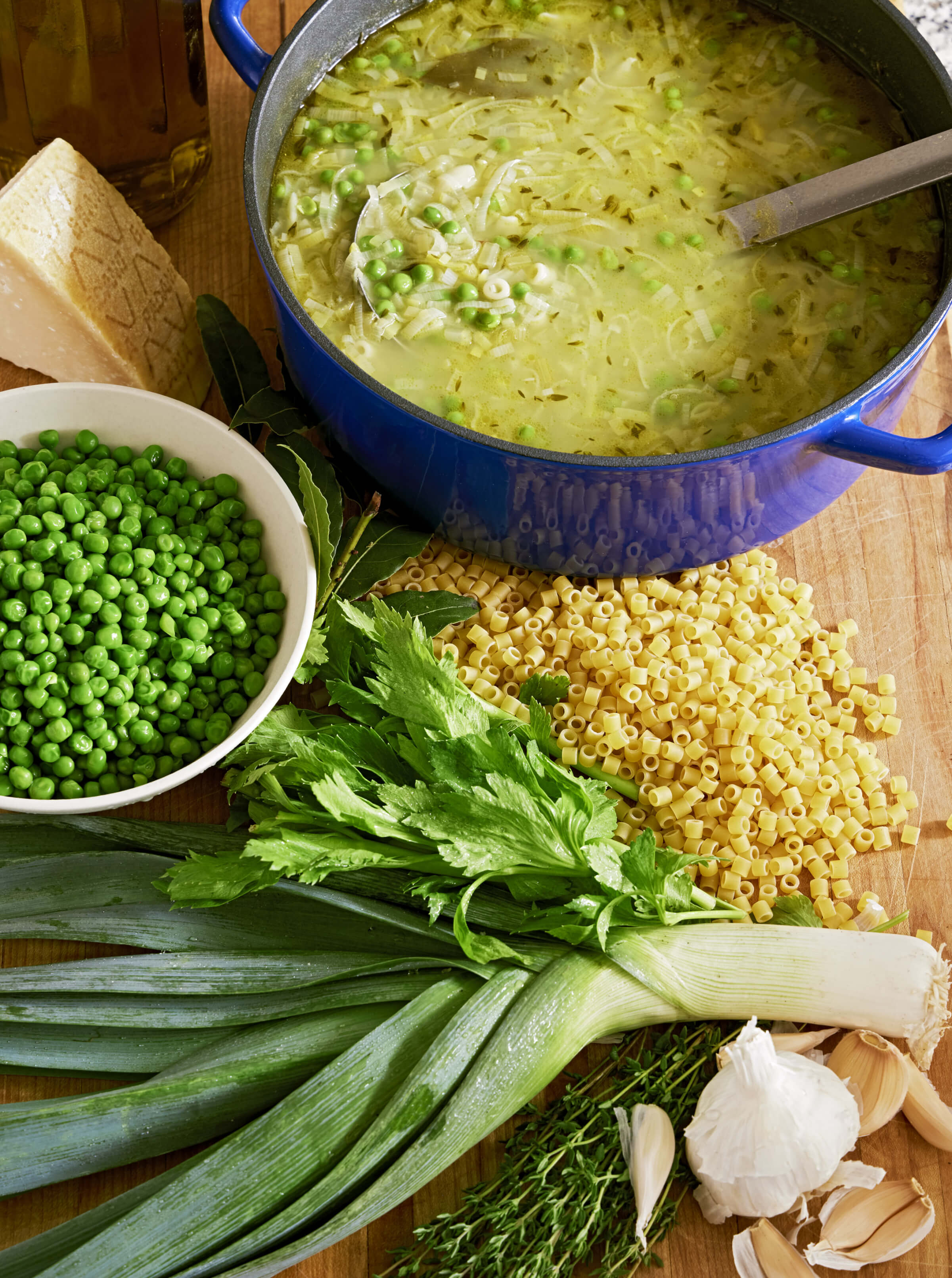
“When we came here as immigrants, my grandmother bought a lot of chicken necks, wings, even feet,” she says. Today she’ll buy a whole chicken, remove the breasts, thighs and drumsticks, and then use the rest of the chicken for soup. Into the stock will go parsley stems, the tops of celery stalks, and other pieces of plants that many of us just throw away. “Wash them, put them in a little Ziploc bag and freeze them,” she says. “Every part of the plant is usable.” She even freezes fresh tomatoes, which can then be used for sauce or soup, or grated—still frozen—over a nice burrata or mozzarella with some olive oil. Dried beans, peas and nuts are also a staple; she’ll buy them individually in bulk, then freeze what she doesn’t need to better preserve them.
Recycling leftovers is also important to Bastianich. One of her favorite tricks is turning last night’s dinner into this morning’s breakfast. “Put some pasta Bolognese into a pan with a little oil, reheat it, then mix in some eggs, like a frittata.” She often bakes bread from scratch but will also pick up “parcooked” breads. “They’re partially cooked. You put them in the oven and finish the cooking, and it’s like freshly baked bread,” she says.
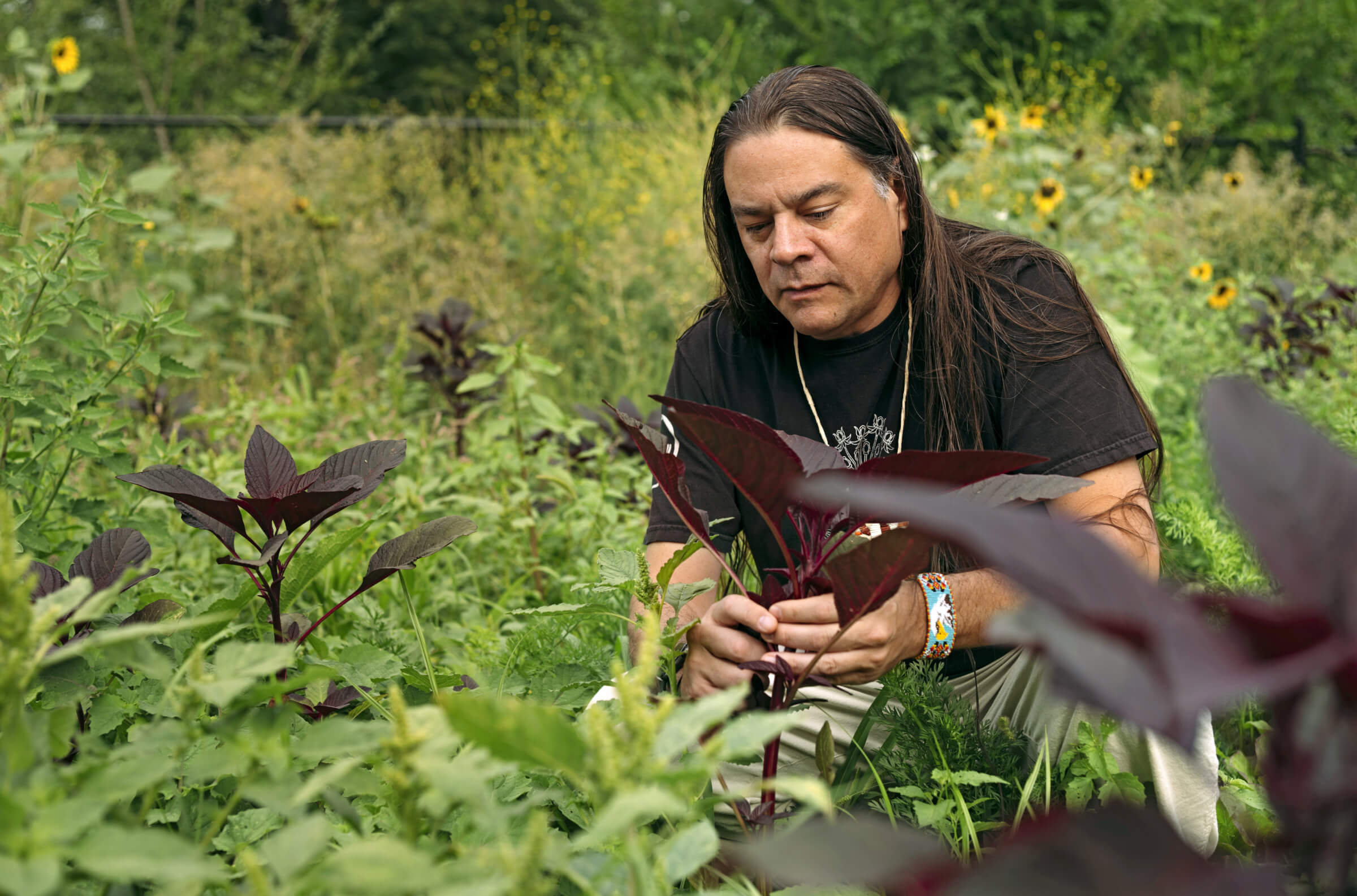
SEAN SHERMAN, 49
Indigenous chef and cookbook author
WHAT’S IN HIS CART: Seasonal vegetables, fresh fish, dried corn, beans and dried chiles
MUCH OF SEAN Sherman’s food shopping doesn’t happen in a supermarket. Or in a bodega, a big-box store or even online. In fact, you may find him foraging for dinner in the fields near his home in Minnesota. Wild plants like dandelion, wood sorrel and purslane complement locally grown foods like pumpkin and beans; meats might be rabbit, duck or venison, and fish, including northern pike, walleye and lake trout, could come from nearby lakes. Meals are often seasoned with wild bergamot—an oregano-like herb that grows wild in the upper Midwest.
Known as the Sioux Chef, Sean Sherman is an Oglala Lakota author and the founder of Owamni, a Minneapolis restaurant that specializes in “precolonial” foods—the indigenous foods of North America that existed before the arrival of Europeans, who brought with them wheat flour, cane sugar, dairy, beef, chicken and pork. The James Beard Award winner also established the Indigenous Food Lab, a research and teaching facility that educates others about original American cuisine.
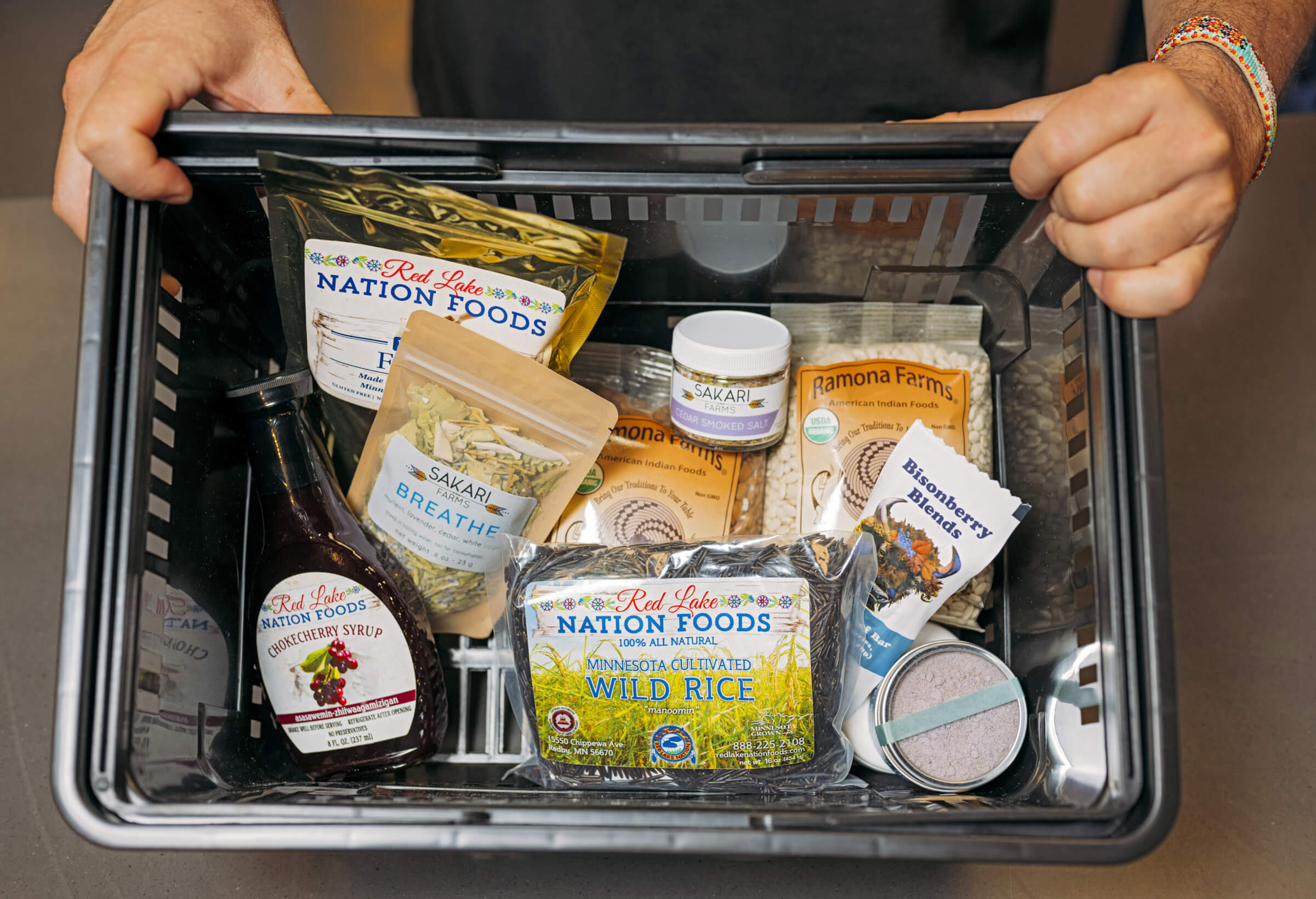
“The indigenous diet is the true diet,” he says. “It’s low-glycemic, low-fat and lower in sodium, and there’s so much plant diversity. It exemplifies an ideal healthy diet for anyone.” Many of the plants he can’t forage, he’ll grow in his home garden. “I enjoy making my own spice-rack stuff,” he says, “drying out herbs I’ve grown.”
Of course, not everything Sherman cooks comes right from the earth. “I shop lightly, but frequently, and I buy little bits of enough stuff to make dinners.” He’ll purchase a lot of dried staples in bulk, including corn, rice, beans and chiles. And almost every shopping trip finds him coming home with a few different fresh vegetables in his cart. He also splurges on ocean shellfish, including oysters, mussels and scallops. Meat from the store might include lamb, goat and lots of bison, any of which is likely to end up in a tortilla, he says. “I love game tacos, as well as sweet potatoes and wild rice bowls.”
Sherman avoids fast food and processed foods whenever possible. Favorite snacks are simple dark chocolate and homemade popcorn with olive oil and salt. When reading nutrition labels, he looks to avoid products that are high in salt or carbohydrates. “Fewer ingredients, fewer preservatives,” he says. “I’m looking for things that are real.”
Stephen Perrine is special projects editor for AARP THE MAGAZINE and author of The Whole Body Reset, out in paperback December 26, 2023.
From top: Danny Trejo/Shayan Asgharnia/Vallarta Supermarkets; Devin Alexander/Maggie Shannon/Vons; Al Roker/Rob Howard/Hudson farmers market; Carla Hall/Jared Soares/Wagshal’s; David Katz/Bryan Anselm/Edge of the Woods; Lidia Bastianich/Dana Gallagher/Lidia’s home kitchen; Sean Sherman/Nate Ryan/Indigenous Food Lab Market and garden